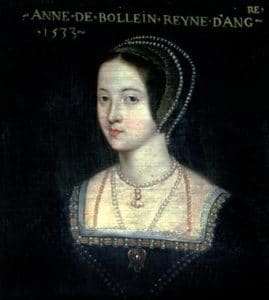 On this day in history, 25th October 1532, King Henry VIII arrived back in the English territory of Calais following his visit to the French court at Boulogne. Francis I, King of France, travelled back with him.
On this day in history, 25th October 1532, King Henry VIII arrived back in the English territory of Calais following his visit to the French court at Boulogne. Francis I, King of France, travelled back with him.
The Maner of the tryumphe of Caleys and Bulleyn says this of their journey and arrival:
“And on frydaye folowynge the kynges came to Caleys. And the dolphyn with the cardynalles and all theyr gentylmen brought the kynges vnto ye place where they fyrst mette and than departed. The frensshe king had great cariage for there came ccc. mules laden with stuffe. And whan they came to Caleys they were saluted with great melody what with gonnes and all other instrumentes and the ordre of the towne it was a heuenly syght for the tyme First at Newnam bridge, iiij. c. shotte at the blockhous. xl. shot at Rycebanke toure. iij. c. shot within ye towne of Caleys. ij. m. shot great and small besydes the shyppes it was all nombered. iij. m. shot. And at Bulleyn by estymation it past not. cc. shot but they were great peces. Also for the ordre of the towne there was set all seruynge men on the one syde in tawny cotes and sowdyours on the other syde all in cotes of reed and blewe with halberdes in theyr handes. And so the kynges came ryding in the myddes and so the frensshe kynge went to staple hall which is a pryncely hous and vpon saterday bothe the kynges rode to our lady chyrche to masse.”
Chronicler Edward Hall agrees with this account, adding that Francis I’s train comprised 1200 people “and so many horse more”. He also adds that when they were two miles outside of Calais, they were met by Henry Fitzroy, Duke fo Richmond and Henry VIII’s illegitimate son, who was accompanied by “a greate compaignie of noble men”. The English and French parties then carried on with their journey, being met at Newnam Bridge by Thomas Palmer, captain of the fortress, and soldiers, who all saluted the two kings. As they entered Calais, they were met with shot from the town, castle, Ricebank and ships, the French men commenting that “they never heard suche a shotte”. They were then greeted by the sight of the soldiers of Calais standing on one side of the road, dressed in red and blue, and on the other side of the road the serving men of England dressed “in coates of Frenche Tawney” with “a Scarlette cap and a white fether.”
Henry VIII then escorted Francis I to his lodgings at Staple Hall, where his chambers were “hanged with so rich verdore, as hath not been seen, the ground of it was gold and damaske, and all ouer the tuftes and flowers, were of Satten, Silke and Siluer, so curiously wrought that they seined to growe, euery chamber was richer, and other: the second chamber all of Tissue, with a clothe of estate of nedle worke, set with great Roses of large pearle. The third was hanged with Veluet, vpon veluet pirled grene and Crimosyn, and embraudered ouer with braunches, of flowers of Gold Bullion, and garnished with armes and beastes of thesame gold, set with pearle and stone.”
There was no sign, however, of Henry VIII’s sweetheart, the woman who had accompanied him on his journey from England to Calais, Anne Boleyn. On his arrival in Calais, Francis I sent the Provost of Paris to Anne Boleyn with a gift, “a diamond worth 15,000 or 16,000 cr.”, but still Anne didn’t appear. Anne was biding her time, she was going to make a dramatic entrance on 27th October 1532, at the special banquet held by Henry VIII in Francis I’s honour.
You can click here to view a timeline of the couple’s trip to Calais in October 1532, with links to articles on it.
Notes and Sources
Picture: Anne Boleyn, French School.
- ed. Goldsmid, Edmund (1884) The Maner of the tryumphe of Caleys and Bulleyn and The noble tryumphaunt coronacyon of Quene Anne, wyfe unto the most noble kynge Henry VIII, Printed by Wynkyn de Worde, 1532-33, p.12-13.
- Hall, Edward (1809) Hall’s chronicle: containing the history of England, during the reign of Henry the Fourth, and the succeeding monarchs, to the end of the reign of Henry the Eighth, in which are particularly described the manners and customs of those periods. Carefully collated with the editions of 1548 and 1550, p792-793.
- Letters and Papers, Foreign and Domestic, Henry VIII, Volume V, 1485.